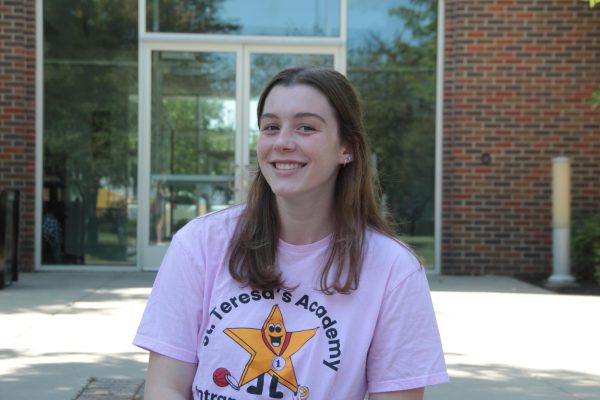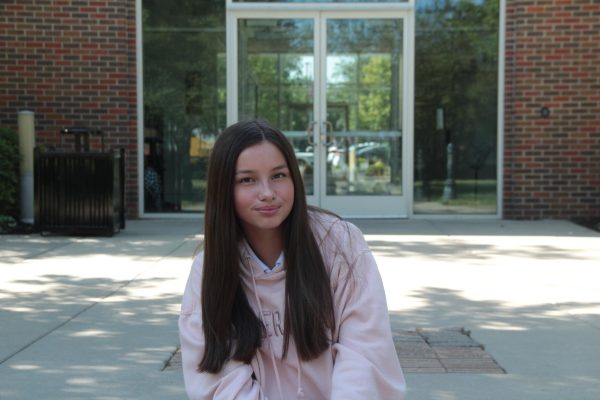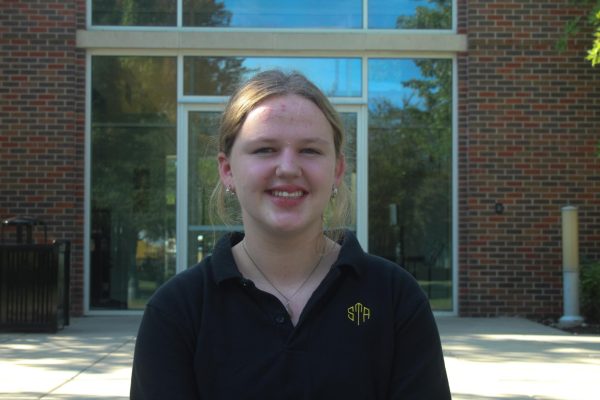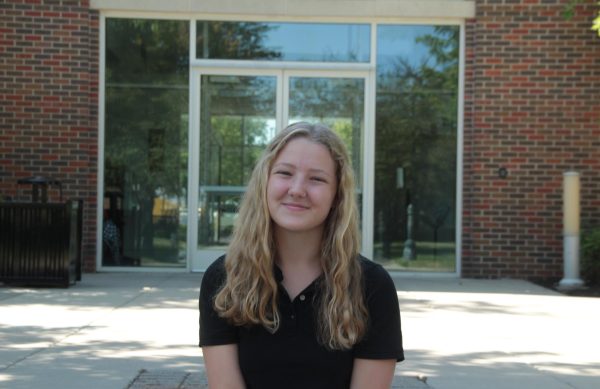Why STA needs traditional art, and Teresa Wallerstedt
Teresa Wallerstedt’s part-time status has deprived me of quality instruction, and I worry for the future of non-computerized art at STA.
March 8, 2017
Painting and drawing classes are valuable- the ones that require you to do it with physical media on paper before the mouse and the screen. If the desire is to forge ahead into art in a more advanced way, I believe one must learn the rules before breaking them, even though computer generated art seems more efficient and can make one capable of good art while bypassing traditional instruction. Though in many ways art successfully transcends “rules,” it’s no secret that art has proliferated for thousands of years before the digital age, finding ways to break the status quo by getting one’s hands dirty.
So, why is art teacher Teresa Wallerstedt, a qualified artist in the more “traditional” arena of drawing and painting with valuable, refined skill to share, being cut back to part-time and why is STA pushing away from traditional Fine Arts curriculum?
I recognize that administration cannot divulge personnel matters with a student and I understand that it is hard to implement financially reasonable and practical course plans, and some party will have to make a sacrifice.
Yet, I feel like I am that party.
Because of this, I am sad for future students who will receive less from the traditional art classes (or may not have these classes as an option at all) that have not only blessed me with awards and recognition but substantially lessened my projected college tuition through scholarships.
I have noticed the effort to incite interest in more technologically focused art classes like 3-D Design or Graphic Design, which include teaching students valuable skills. However, students are attracted to these because they aren’t required to know how to draw to be good at them. This misconception deters people from drawing and painting classes. The reality is that you don’t have to know how to draw to take Drawing and Painting courses either- one is simply graded on their effort and progress.
STA cultivates driven, high achieving women, and certain disciplines shouldn’t be bolstered over others because they may be more “practical,” or more in-line with a STEM initiative. The few students who have endeavored to take Wallerstedt’s classes have never gone a year without Scholastic regional recognition, and have reaped substantial rewards in Invitational and even Congressional art competitions, myself included. For me, the best recognition, and gratification from that recognition, comes from working hard and knowing I didn’t have to use technology as a shortcut.
Though Wallerstedt’s hours may have been cut for reasons I cannot understand, the reality is, the more she isn’t here the less likely people are to know what she teaches and the less approachable she is outside of the classroom. Additionally, those who do take her classes will have compromised instruction because her crunched time frame in which she can teach requires her to teach multiple classes at once. It may seem like a drawing, painting and portfolio class have enough things in common to receive general instruction applicable to each, but each of these classes actually has a different curriculum, different projects and different students at different stages of progress.
Some may think, “shouldn’t a real art class thrive off of creativity, which requires more self-direction and independence than second-hand instruction or rules to abide by?” But if Wallerstedt wasn’t here to give linoleum block demos, students would be carving their hands off with a seemingly harmless blade and would take longer to reach their vision without knowing how much ink to put on a brayer. If Wallerstedt wasn’t here, no one would have told me to leave negative space on my city-life painting that went on to win multiple forms of regional recognition. Her ability to teach thoroughly with attention to technicalities and a discerning eye allows us to independently execute art without her, outside of school and in the future. Plus, doesn’t it only make sense that something detail oriented and subjective to the hands making it requires more individual and specific instruction, or even simply objective critique? And why shouldn’t it, when you have an overly-qualified educator with her master’s in a subject that covers a broad range of disciplines under the umbrella of art.
Also, importantly, if Wallerstedt wasn’t here, no one would better fry eggs and potatoes on a whim for her morning classes. No one would replace her classic taste in music that pleases everyone- old Beatles (“the first album she ever owned”), Dylan, Ladysmith Black Mambazo, Etta James, Adele, and Adele’s arguably more talented pre-cursor Dusty Springfield. No one would stand over my shoulder to scrutinize my paintings and make them better or impart criticism like a national judge would.
If Wallerstedt wasn’t here, I wouldn’t be inspired to retake each art course I’ve taken from freshman year to present knowing that I would have half of the instruction I did, and knowing that I wouldn’t get to know my teacher. Without her, the arts program would truly be missing its heart and soul.











Julie (Grace) Beers • Sep 15, 2019 at 11:09 am
T (Wally) Wallerstedt was my best friend and maiden of honor at my wedding!
I only today read this story with a sad heart.
Shelby Hawkins • Mar 20, 2017 at 10:38 am
Preach, Ellie.
Updates like this from STA make me so disappointed. My traditional arts education was one of the most unique and meaningful parts of my time at STA – in fact, the school’s commitment to arts and theatre is what made me (and several of my friends) opt to attend. My art classes at STA were completely consistent with the college preparatory environment and always challenged me as a student and young woman. I learned so much from Ms. Wallerstedt and I wouldn’t be studying design at a great university if not for her help and encouragement. It would be ludicrous to ask math or science teachers to instruct multiple classes at the same time. It’s equally unreasonable to push multiple art courses into one narrow window of time. I hope that in the coming years, STA is able to balance its new initiatives and STEM focus with its commitment to fine art. Otherwise, future students will be stripped of the opportunities that my peers and I had.
Thanks for writing this, Ellie. (Although I’m shocked you didn’t mention Van Morrison in the list of Wallerstedt’s classic music taste.)
Shelby Hawkins
STA Class of ’14 and current design major 😉
Mary Jo Coughlin • Mar 8, 2017 at 11:25 am
Ellie, thank you for this well thought-out and, in my opinion, accurate assessment of the value of basic and advanced art instructional STA. Ms. Wallerstedt has been blessed to have some incredibly talented art students like you over the years. She is keenly aware of the innate talent you and these students possess, and it gives her great satisfaction to nurture and guide that talent, though she assumes no credit for it. In addition to you who are art STARS, there are many other students who have for years benefitted by Ms. Wallerstedt’s art and teaching skills. Most of them are not active artists now, but retain the skills and deep appreciation for fine art that they received at her hands. I know this because three of my children are accomplished but “unpublished” artists, and I attribute their love of and abilities in art to their classes with Ms. Wallerstedt in elementary and junior high school.
Thank you for using your highly qualified voice to highlight an issue that I believe many other past, current and potential STA students, parents and supporters share.
Mary Jo Coughlin
Former STA faculty member